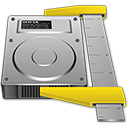 Home
Home
Frequently Asked Questions
WhatSize 8.2.4 Now supporting macOS Tahoe
Engineered using the latest Apple technology
 Home
Home
WhatSize 8.2.4 Now supporting macOS Tahoe
Engineered using the latest Apple technology
WhatSize is a FileSystem utility that lets you view and clean up files and folders based on size. The application is optimized to quickly measure the size in bytes of a given folder or of an entire FileSystem. Once a measurement has taken place, the user can view, filter, sort, and remove files and folders that are taking up too much space.
Our software is signed and notarized with Apple to comply with the GateKeeper Technology.
A typical license key allows for activating the software on 2 machines. You can install on more machines but first you will be asked to reset the current activations. We use your registration email to send confirmations.
You will need a valid license key and the email address use to purchase it. Click Lost Key to locate your key.
We are fully suporting hfs, and its variants, which covers 99% of file system types on the mac. SMBFS or windows shared volumes are not supported on 6.1.4 but might be added very soon.
We gave up fighting with Apple's burocracy. Please get a license directly from us. Contact Us if you want to upgrade your old Mac App Store version.
We measure Time Machine volumes using Apple’s metadata which is very fast. We do not provide support for modifications to TM Volumes.
WhatSize measures accurately the Physical Size and Logical Size of each file and will display the Physical Size as a short string, ie: "102 KB, or 14.2 GB". We calculate and display the same numbers you see when you perform "Get Info" on a file in Finder.
In general a file will have a Physical Size larger than the Logical Size. For example if you create a simple text file with one character in it, the file’s Logical Size will be one byte (1B), but the Physical Size of the file - the actual space used on your hard drive to store this file - is going to be 4KB.
In some cases you will notice that the Logical Size will be much larger than the Physical Size. An obvioius example is Xcode.app. This is due to the fact that certain files are managed in compressed form to use less disk space.
WhatSize will consider the size of a folder to be the sum of the sizes of all its children.
Download the latest Version 7 for High Sierra (10.13) .. Ventura (11)
Download the latest Version 7 for Sierra (10.12) .. Catalina (10.15)
Download the latest Version 6 for El Capitan (10.11) .. Mojave (10.14)
Download the latest Version 5 for Snow Leopard (10.6) .. Yosemite (10.10)
Download the latest Version 5 for Leopard (10.5) .. Mavericks (10.9)
Download the latest Version 5 for Tiger (10.4) (PPC & Intel) .. Leopard (10.5)
Finder displays the available space on the disk without accounting for the local snapshots. A clean reboot will allow Finder to be more accurate.
Finder displays the size without taking into consideration resource fork data.
Finder does not properly handle hardlinks. It is known to count them twice.
- One Bit is literally a zero or one. The smallest amount of info a computer can handle. We represent the file sizes in the app using the following color scheme.
- One B (Byte) = Eight Bits
- One KB (Kilobyte) = 1000 Bytes (2 to the 10th power)
- One MB (Megabyte) = 1000 KB = One CD is around 600 MB
- One GB (Gigabyte) = 1000 MB = One DVD is around 4.5 GB
- One TB (Terabyte) = 1000 GB = One 4K Blu-ray Disc is around 100 GB
It’s because drive manufacturers use the decimal system to measure drive capacity (in which 1 GB = 1,000,000,000 bytes, not 1024^3 bytes). Apple switched to using this method in their Snow Leopard release (so in Snow Leopard a 150 GB drive shows up at 150 GB. So this is not an issue when using SnowLeopard and newer.
Starting on v7 we use a trusted daemon com.id-design.v7.whatsizehelper and Apple's Full Disk Access to always measure as Admin. This allows for better tracking of file usage.
We use the latest APIs from Apple and are bound by disk i/o. A file system with 5 million nodes on SSD will be measured in less than one minute.
Open up the Trash in Finder and move the file back to its proper location.
You will need a valid license key and the email address use to purchase it. Click Lost Key to locate your key.
As of 4.9.8, yes, simply select a file and hit the spacebar just like in Finder.